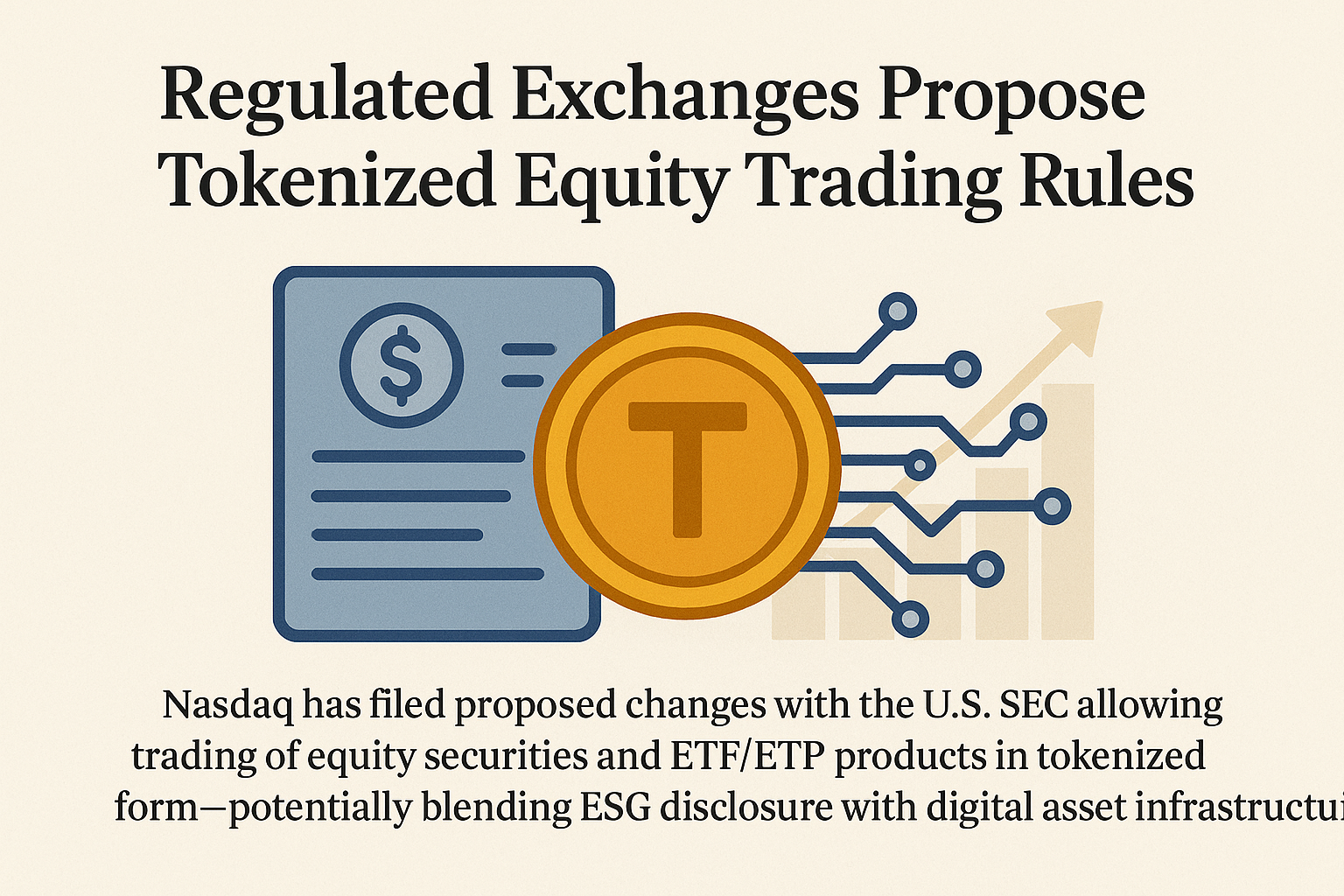In a landmark move that could redefine how global markets operate, Nasdaq has submitted a proposal to the U.S. Securities and Exchange Commission (SEC) seeking approval for the trading of tokenized equity securities and ETF/ETP products. This isn’t just a small technical update—it’s the first major step by a regulated exchange to integrate digital asset infrastructure into traditional financial markets.
The Proposal: Bridging Traditional and Digital Finance
Nasdaq’s proposal aims to enable equity and fund shares to exist as blockchain-based tokens, representing ownership in a secure, verifiable digital format. Unlike cryptocurrencies or unregulated tokens, these would operate under SEC oversight, ensuring that every digital share remains compliant with existing securities laws.
This integration could mean instant settlement, lower transaction costs, and improved transparency—all while maintaining investor protections and market integrity. It also represents a major stride toward tokenization of real-world assets (RWAs), a trend increasingly viewed as the next major phase in capital markets modernization.
ESG Meets Blockchain
One of the most innovative aspects of Nasdaq’s filing is its mention of ESG (Environmental, Social, and Governance) disclosure integration. Tokenized securities could carry embedded ESG data, allowing investors to track sustainability metrics and corporate responsibility in real time.
This could transform ESG investing from static, annual reports into a dynamic, data-driven process. Imagine a scenario where each tokenized share includes live updates on carbon emissions, labor practices, or board diversity—directly verifiable on-chain.
Why Tokenization Now?
Global exchanges and regulators have watched the rise of blockchain infrastructure with both fascination and caution. As tokenization technology matures, the benefits of programmability, speed, and cost efficiency are becoming too significant to ignore.
In today’s market, trading and settlement often occur over multiple intermediaries—brokers, clearing houses, custodians—all of which add friction, delay, and cost. With tokenized equity, transactions could settle in seconds, freeing up liquidity and capital.
At the same time, institutional investors are demanding digital-native financial instruments, especially as tokenization gains ground in real estate, commodities, and even art markets. Nasdaq’s move signals that the traditional financial system is finally ready to meet that demand head-on.
The Regulatory Balancing Act
Of course, the SEC’s approval is not guaranteed. Regulators will need to evaluate how tokenized securities fit within existing frameworks for custody, investor protection, and disclosure.
Still, Nasdaq’s proposal may create a template for other regulated exchanges—such as NYSE, Cboe, or Euronext—to follow. If approved, it could mark the beginning of a broader policy shift toward integrating digital ledger technology into mainstream securities markets.
What Comes Next
If the SEC greenlights Nasdaq’s rule change, it will pave the way for a hybrid market structure where traditional shares and tokenized versions coexist. This could transform how capital is raised, traded, and reported—especially as blockchain-enabled transparency becomes a market expectation.
For investors, it could mean faster access to assets, clearer ESG data, and potentially lower fees. For exchanges, it represents a competitive evolution—blending the trust of regulated markets with the innovation of blockchain technology.
In short, Nasdaq’s proposal could be remembered as the spark that launched the era of regulated tokenized trading—a bridge between Wall Street and Web3 that redefines what ownership means in the digital age.




